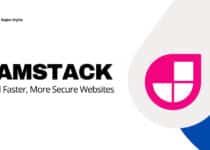How to Start a YouTube Channel and Make Money in 2025

If you’re looking to start a YouTube channel and make money from it, you’re in the right place.
YouTube is one of the best platforms out there for building an audience, sharing your expertise, and turning content into income through ads, affiliate marketing, sponsorships, and digital products.
The best part is, you don’t need to go viral to earn. With the right strategy, even smaller channels can generate steady revenue.
But success on YouTube doesn’t happen by chance. You need to treat it like a real business from day one.
In this comprehensive guide, I’ll walk you through everything you need to know about starting a YouTube channel and transforming it into a legitimate income source.
Let’s get started.
Why Start a YouTube Channel?
Before jumping into the how-to, let’s talk about why YouTube is still one of the best platforms for growing online.
YouTube gets over 2.5 billion users every month. It’s the second biggest search engine in the world, right after Google. That means people are searching for content like yours every day.
The platform offers multiple revenue streams, incredible audience reach, and the opportunity to build a personal brand that can expand into other businesses.
Unlike other social platforms where you need millions of followers to make money, YouTube allows creators with smaller, more dedicated audiences to generate substantial income.
You don’t have to go viral, you just need to create helpful content for a specific group of people and stay consistent.
Step by Step: How to Start A YouTube Channel
Step 1: Sign in with your Google Account
To start your YouTube channel, you’ll need a Google account. This is the same login you’d use for Gmail, Google Drive, or any other Google service.
If you already have a Google account, you can use that to sign in. If not, here’s how to make one in minutes:
- Go to youtube.com and click the “Sign In” button in the top right corner (this works the same way in the mobile app)
- Click “Create account” on the sign-in page
- Follow the prompts to set up your account – you’ll need to provide some basic information
- Choose between creating a personal account or a business account based on your needs
Your choice between personal and business accounts matters. If you’re building a personal brand around yourself, a personal account might work fine.
For a more professional channel representing a business or organization, a business account offers additional features.
Once you’re done, you’ll be automatically signed into YouTube using that Google account.
Don’t worry about the name or profile picture—it just uses your Google info for now. You can totally customize everything when you set up your actual channel next.
Step 2: Creating Your YouTube Channel
After signing in with your Google account:
- Click your profile picture in the top right corner of the YouTube homepage
- From the menu that pops up, choose “Settings”
- Under the “Your YouTube channel” section, click “Create a channel”
- If you chose a personal Google account, you can now launch a business channel by selecting “Use a business or other name”
- Enter your desired channel name (don’t stress too much—you can change this later)
- Click “Create” and your channel is officially live
Take a second and give yourself a little high five. This is a big first step.
Now that your channel is set up, it’s time to figure out what kind of videos you want to make, who you’re talking to, and how you’re going to stand out.
Step 3: Customize Your Channel
Let’s give your YouTube channel a clean, professional vibe. It helps people take you seriously and hit that Subscribe button.
Here’s what you need:
- Profile picture (800 x 800 pixels) – Use a clear photo of yourself if it’s a personal channel or a logo if it’s a brand. Make sure it looks sharp and friendly.
- Banner image (2048 x 1152 pixels) – Create a custom banner that communicates your value proposition and maintains consistent branding.
- Channel description – Write a short intro telling people who you are, what your channel is about, and why they should stick around. Keep it simple, clear, and true to your vibe.
- Custom URL – Once you reach 100 subscribers and your channel is at least 30 days old, claim a custom URL.
These small details are actually a big deal. They’re often the first things people see when they land on your channel, so take your time and make it count.
Step 4: Plan What Kind of Videos You’ll Make
If you want your channel to grow, don’t just post random videos whenever you feel like it. Take a little time to plan things out because it really helps.
Here’s how to keep it simple:
- Pick 3 to 5 main topics you want to focus on. These will be your content pillars. For example: study tips, tech reviews, or daily vlogs.
- Choose your video style. Do you like making tutorials, talking to the camera, doing reviews, or sharing your life? Pick formats that feel natural to you and fit your topic.
- Create a posting schedule you can actually stick to. Even one video a week is great—as long as you stay consistent.
- Do basic keyword research. Use free tools like TubeBuddy or VidIQ to find out what people are searching for in your niche. It’ll help your videos get discovered.
Trust me, channels that post regularly even just once a week tend to grow much faster than those that upload randomly.
Step 5: Upload Your First YouTube Video
Creating and uploading your first video is a significant milestone in your YouTube journey.
While it might not get thousands of views, this initial video sets the tone for your channel and begins building your presence. Here’s how to make your debut as impactful as possible.
Get Your Video Ready
Before you hit upload, take a few minutes to make sure everything is ready:
- Edit your video:
- Use simple video editing software like iMovie (Mac) or Shotcut (Windows/Mac). Cut out any awkward pauses, mistakes, or parts that don’t add value.
- Export in the right format:
- Save your video as an MP4 file with H.264 video and AAC audio. This makes sure your video plays smoothly on YouTube.
- Check your audio:
- Good sound matters more than fancy visuals. Use headphones to check for background noise or volume problems.
- Make a custom thumbnail:
- A good thumbnail can get you a lot more clicks! Use Canva or a similar tool to create one with:
- A close-up face showing emotion (if possible)
- Bold, easy-to-read text (keep it short: 3–5 words)
- Bright colors and a clear focal point
How to Upload Your Video
Now it’s time to go live:
- Log in to YouTube Studio
- Click the “+ CREATE” button at the top-right and choose “Upload Videos”
- Drag and drop your video file or select it from your computer
- While it uploads, fill out the Details section:
- Add your title (up to 100 characters)
- Write a strong description (this helps with SEO)
- Upload your custom thumbnail
- Choose a playlist (or create one if needed)
- Set whether your video is made for kids or not
- Click NEXT to move through:
- Video Elements: Add end screens or cards if you want
- Visibility: Choose Public, Unlisted, or Private
- Click “PUBLISH” if you want to publish now or schedule it for later.
Posting videos at the same time each week helps your audience know when to expect new content.
How to Monetize Your YouTube Channel?
This is probably why you’re here—turning your YouTube channel into a genuine source of income.
I’ve studied the monetization strategies of dozens of successful creators and the ones who truly thrive approach monetization as a multi-layered strategy rather than relying on a single revenue stream.
Here are a few popular ways to monetize your channel:
1. Advertising Revenue
Once you’re part of the YouTube Partner Program, you can earn money from ads that play before or during your videos. These include banner ads, skippable ads, and short overlay ads.
2. Affiliate Marketing
If you’re looking to make money on YouTube without creating your own product, affiliate marketing is one of the easiest and most profitable ways to start.
Choose products that fit your channel and truly offer value to your viewers. For example, if you run a fitness channel, promote gear or supplements.
The key is authenticity. Only promote products you genuinely believe in. Viewers can quickly tell if you’re not being sincere, and once trust is lost, it’s very hard to earn back.
3. Channel Memberships
YouTube lets viewers support you with monthly memberships starting at $4.99.
In return, members can get special perks like exclusive videos, custom badges, or private community posts. Memberships work best when you offer real value—like behind-the-scenes content, early access to new videos, or helpful extras.
For example, a gaming channel might share advanced tips or special member-only livestreams.
4. Sponsored Content
As your channel grows, brands may pay you to feature their products in your videos.
Sponsored videos can earn you much more than ads. Even channels with 50,000 to 100,000 subscribers can make anywhere from $2,000 to $5,000 per sponsored video, especially in niches like tech, finance, or beauty.
When working with sponsors, know your value, ask for creative freedom so your video still feels natural, and always be honest with your viewers by disclosing sponsorships.
5. Selling Your Own Merchandise
If you have a loyal audience, selling your own merch is a great way to build income and community.
You can use YouTube’s merch shelf to showcase products like t-shirts, mugs, phone cases, or stickers right below your videos.
Start with print-on-demand services like Teespring or Printful so you don’t need to handle inventory.
Wrapping Up
Starting a YouTube channel requires patience, persistence, and strategic thinking. While there’s no guaranteed formula for success, combining quality content with smart promotion and consistent effort gives you the best chance.
Focus on providing genuine value to your audience, and the monetization opportunities will follow naturally as your channel grows.
This guide includes everything you need to start a YouTube channel and turn it into a source of income.
Now it’s time to follow this step-by-step process and launch your channel with purpose and profit in mind.


